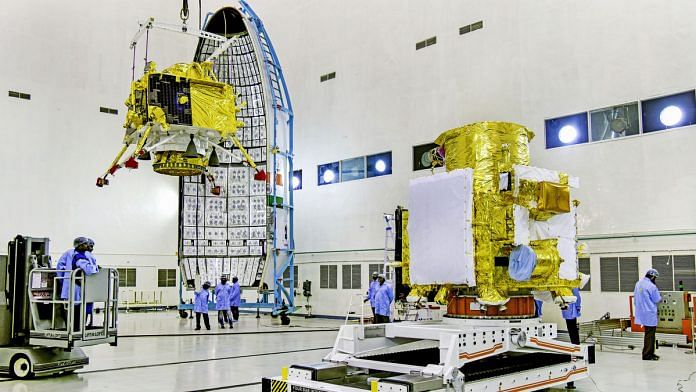Bengaluru: The Indian Space Research Organisation (ISRO) has its work cut out over the next couple of weeks as it looks to revive communication with Chandrayaan-2’s Vikram lander: find out the exact status of the lander, and what went wrong with its landing.
India’s second moon mission saw a setback Saturday after communication with the lander was lost seconds before its scheduled soft-landing on the moon. The country would have become the fourth country to achieve the feat if the landing had been completed as planned.
On Sunday, ISRO chief K. Sivan confirmed that the Orbiter High Resolution Camera (OHRC), the camera aboard the orbiter, has located the lander. However, more information about the lander’s condition hasn’t been released yet, even as the ground station and the orbiter work to reestablish contact.
The lander and the Pragyan rover it houses have a lifespan of 14 earth-days, so all efforts to communicate with it will continue only until then. By 21 September, night would start to set in on the moon, shrouding Vikram in darkness, thereby cutting off any possibility of contact for a further 14 days as the lander runs out of solar power.
As of now, ISRO can only figure out the condition of the lander by imaging the surface of the moon and obtaining physical photographs. And for that, it will need to get its cameras to have a closer look at the lander.
What the cameras can do
Onboard Chandrayaan-2’s orbiter are two cameras.
First, the OHRC — sometimes also expanded to Optical High Resolution Camera — an optical camera that takes consecutive images of the ground over two orbits, from two different angles. This technique is used to create 3D Digital Elevation Models (DEM) of the lunar surface for relief maps detailing surface structures.
Second is the Terrain Mapping Camera (TMC-2), a smaller version of the one that went aboard India’s first moon mission, Chandrayaan-1. It has a spatial resolution of spatial resolution of 5 m over an area of 20 km.
These cameras were used to finalise the landing spot for Vikram lander in the rough area between the two craters Manzinus C and Simpelius N. The lander was uploaded with maps from these data sets, and guided itself towards its landing area, where it was supposed to have fine-tuned its exact landing spot autonomously through its onboard cameras.
The dimensions of the lander are 2.54×2×1.2 m, and TMC-2 has a resolution larger than it. But it cannot image the lander in high resolution.
The OHRC, however, covers an area of 12 km x 3 km, with a resolution of 0.32 m. It is the most powerful camera in lunar orbit today. But even the OHRC is 100 km above the lunar surface, attempting to capture the image of an object that’s smaller than a standard car.
The contrast against the bare lunar surface is a great advantage, but discerning details of the lander’s condition would require heavy and time-intensive processing of the images, in conjunction with the data that was last received.
The data from the final few moments before communication was lost is invaluable and will be scrutinised for weeks to come.
How to get the images
The space agency still has one trick up its sleeve.
The orbiter has enough fuel to lower its orbit to take a closer picture, and then rise back to its original position. After Chandrayaan-2’s launch, ISRO announced that the launcher had “over-performed”, placing the spacecraft into an elliptical orbit 6,000 km higher than intended. This resulted in fuel savings.
Lowering to an orbit of 50 km or so would drastically improve the quality of images obtained of the lander, greatly speeding up the investigation.
The situation seems bleak for the Pragyan rover, but it is still to be seen if a payload or two — of the total of four — could be salvaged from Vikram.
Also read: ISRO chief K. Sivan’s tears reveal passion of a farmer’s son who’s now India’s ‘rocket man’



